Abstract
The results of applying the Wartenberg pendulum test to the assessment of muscle tone in populations of stroke and Parkinsonian patients are described. The test was able to distinguish between increased muscle tone of the spastic or rigid type. The Parkinsonian patients showed a marked reduction of the maximum velocity of the leg swing, with the relaxation index tending to a value of about one. In contrast the affected limb of stroke patients showed a lesser reduction of the velocity of the swing, the relaxation index tending to a value of less than one.
Full text
PDF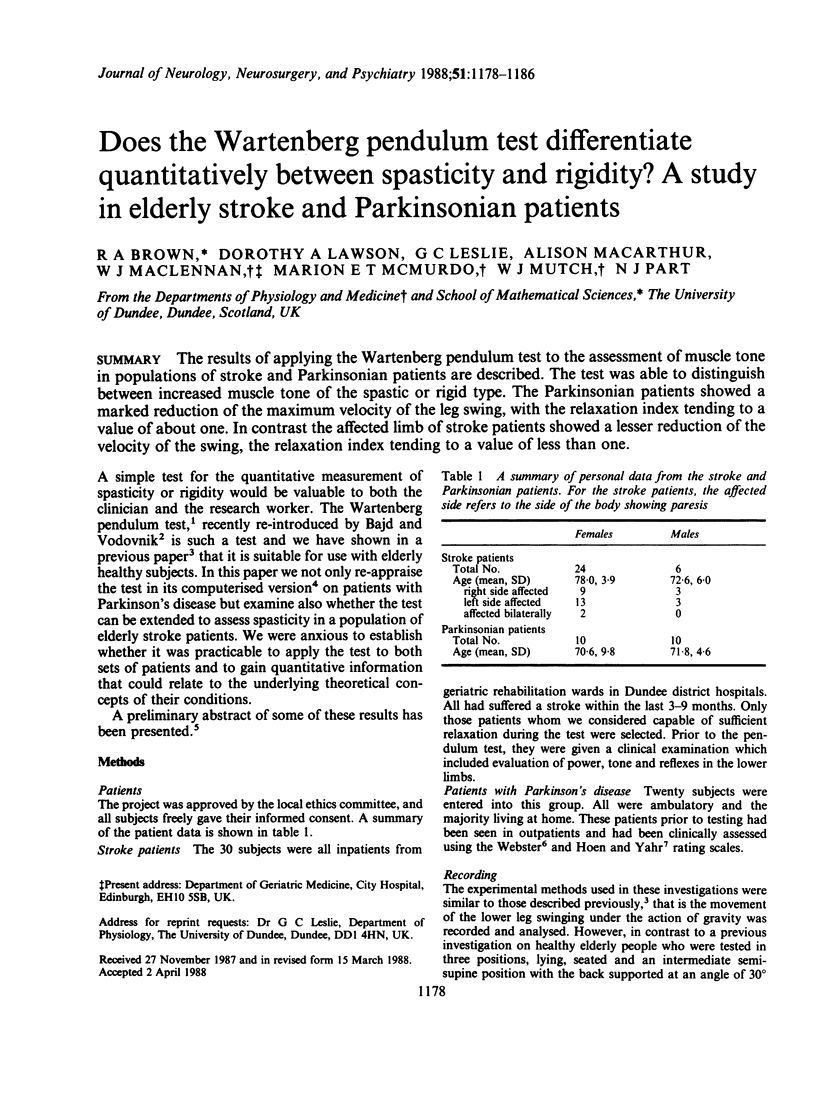
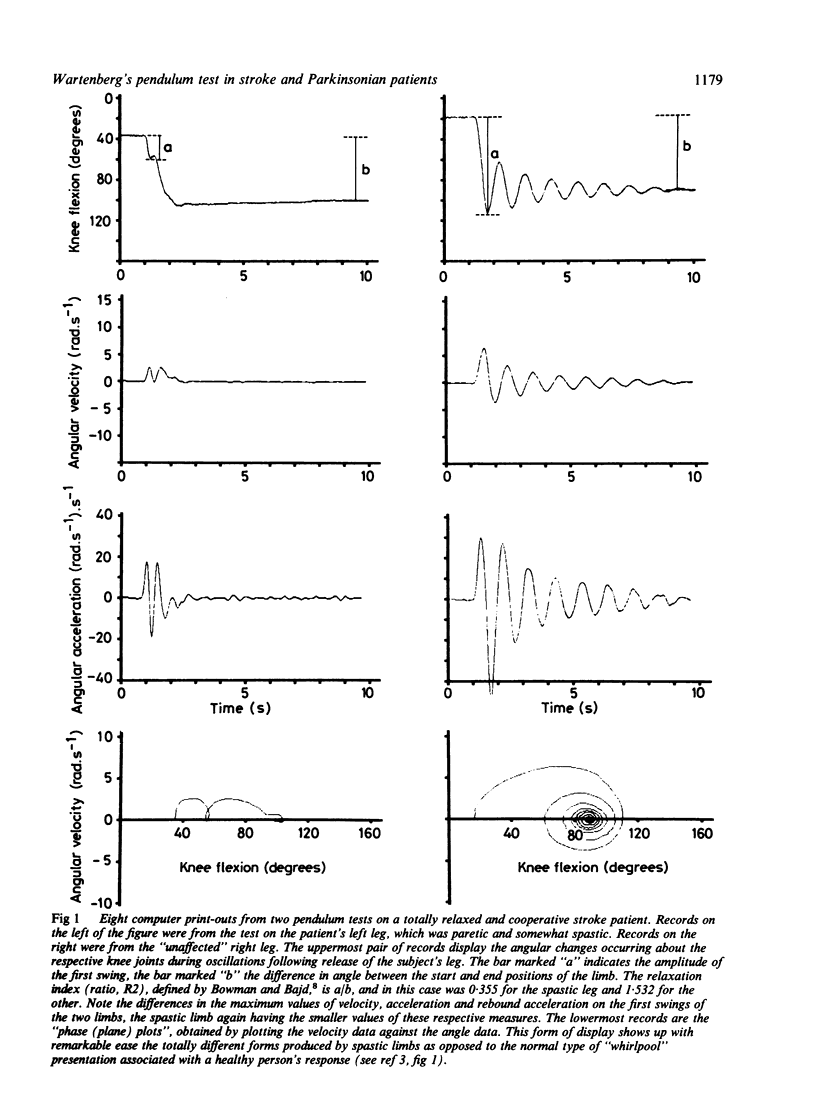
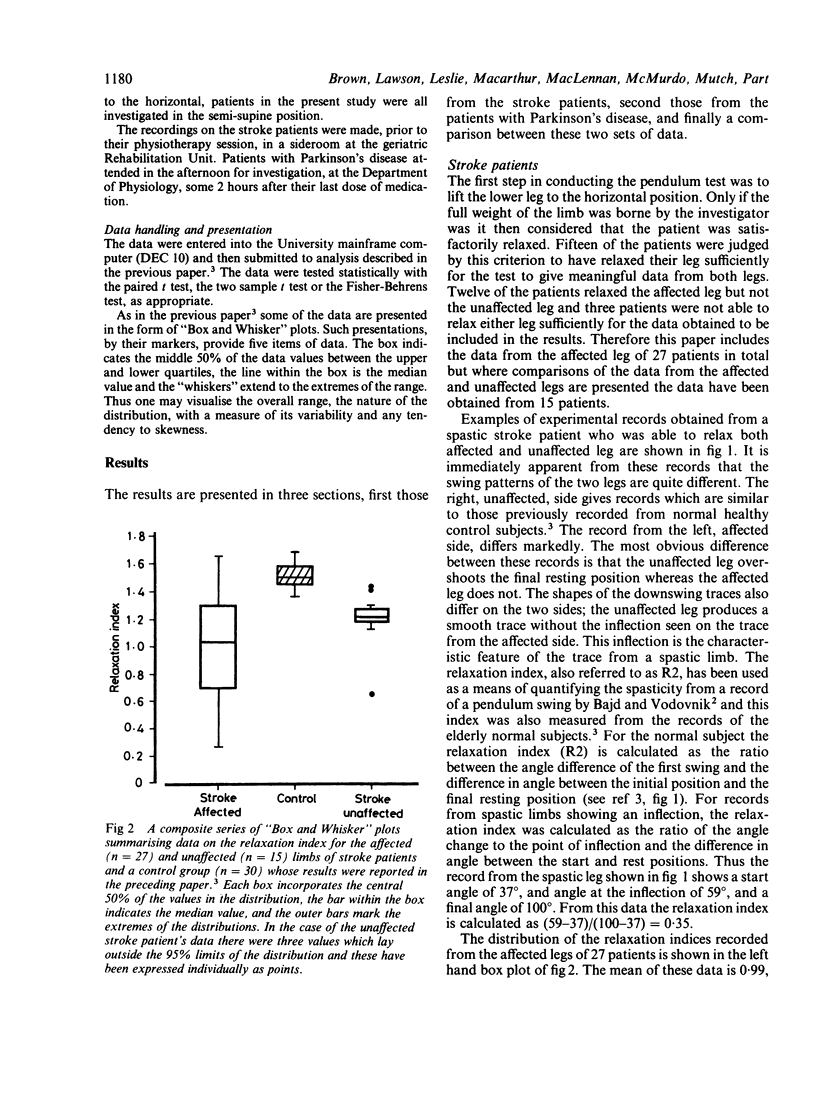
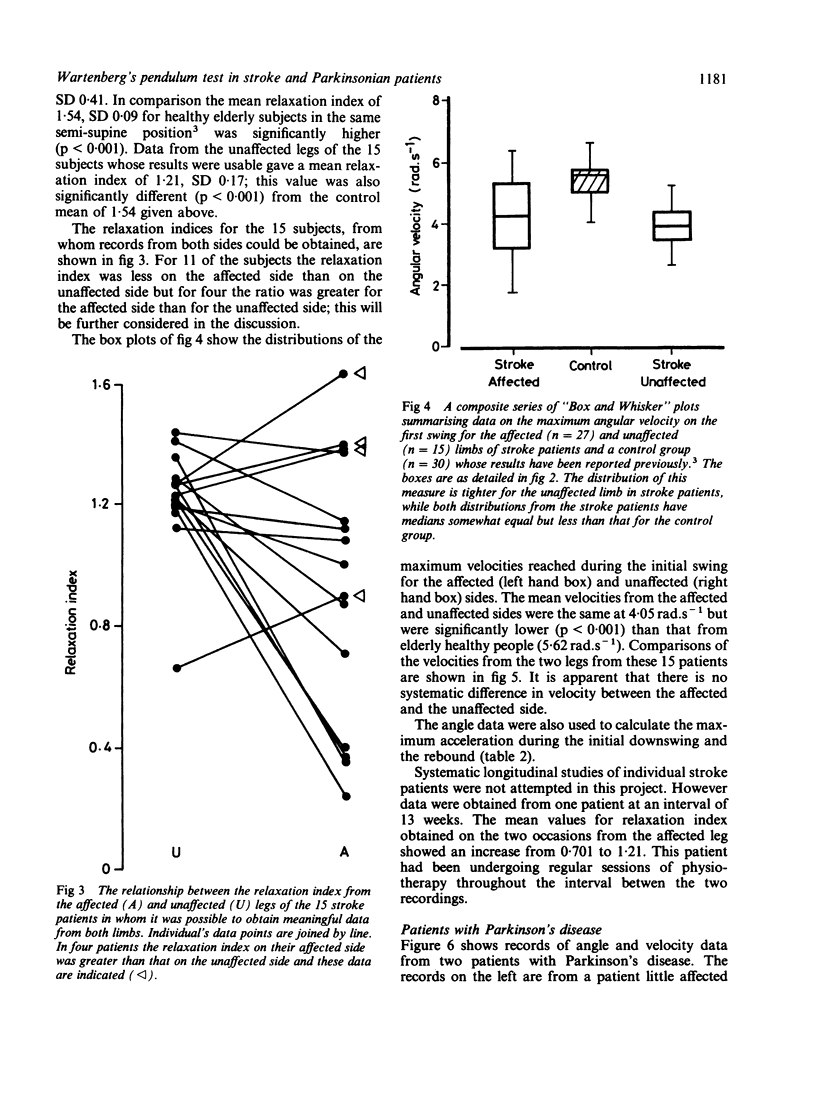
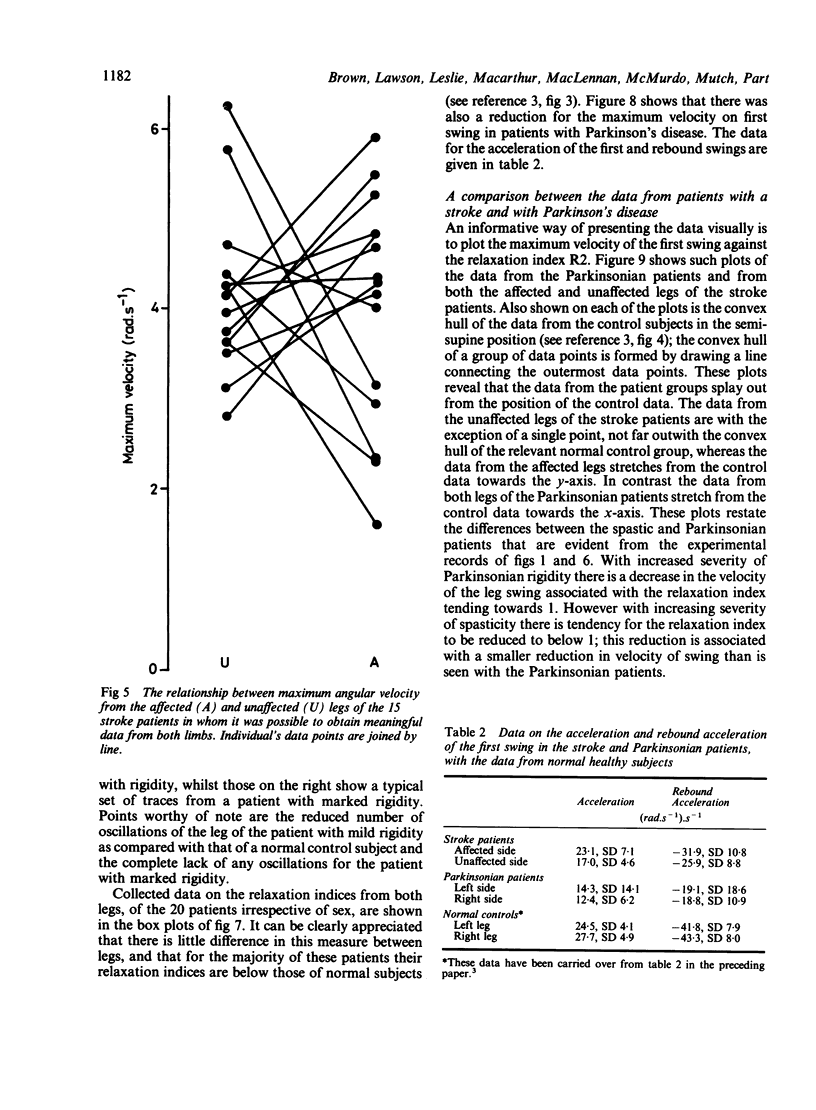
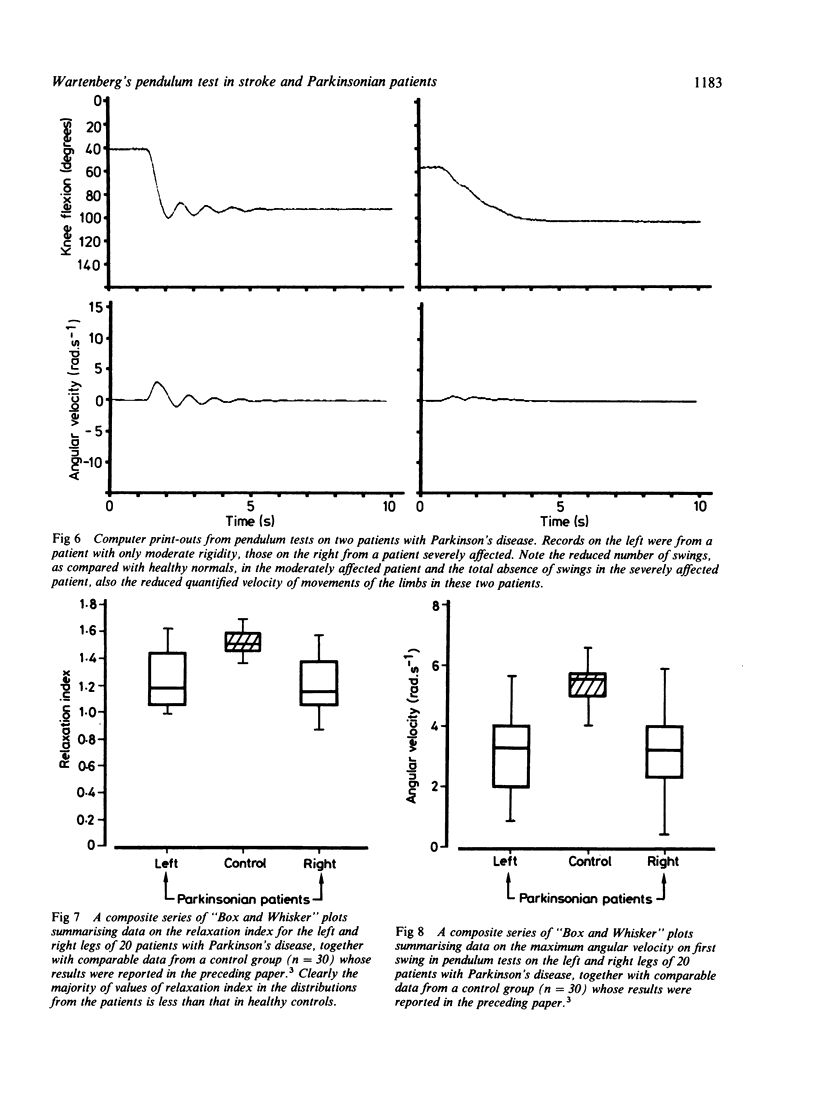
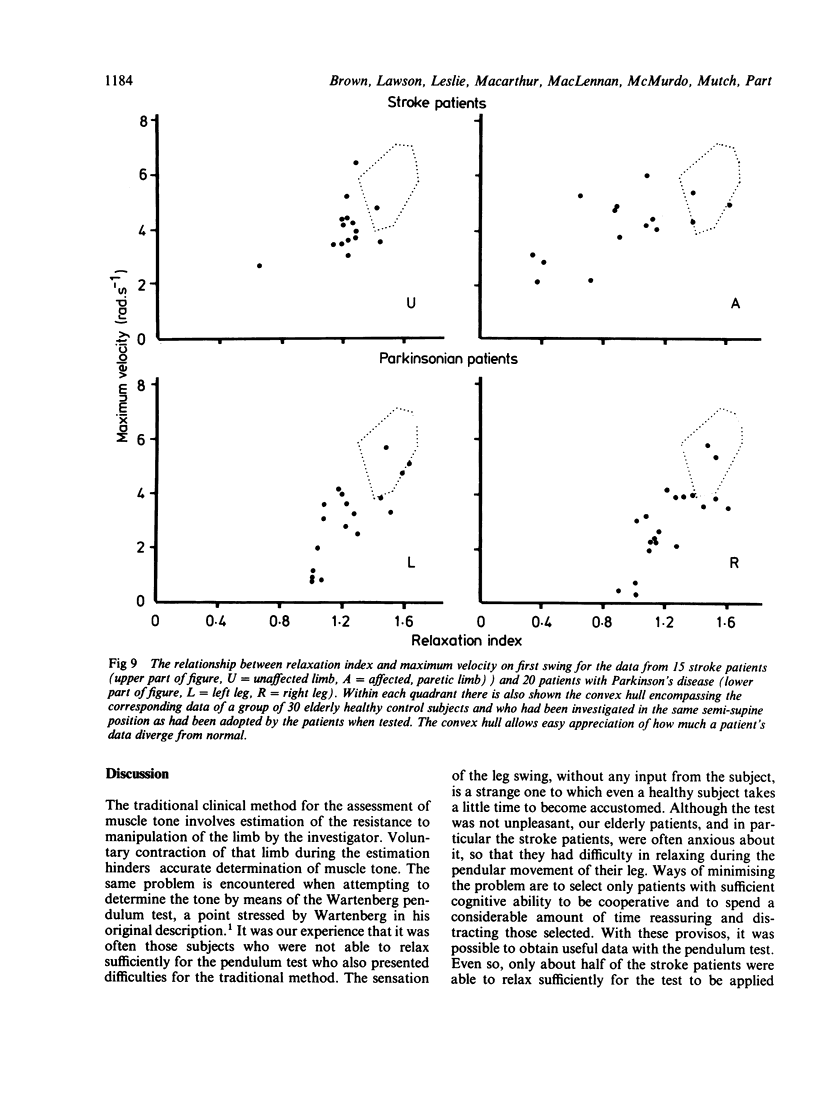

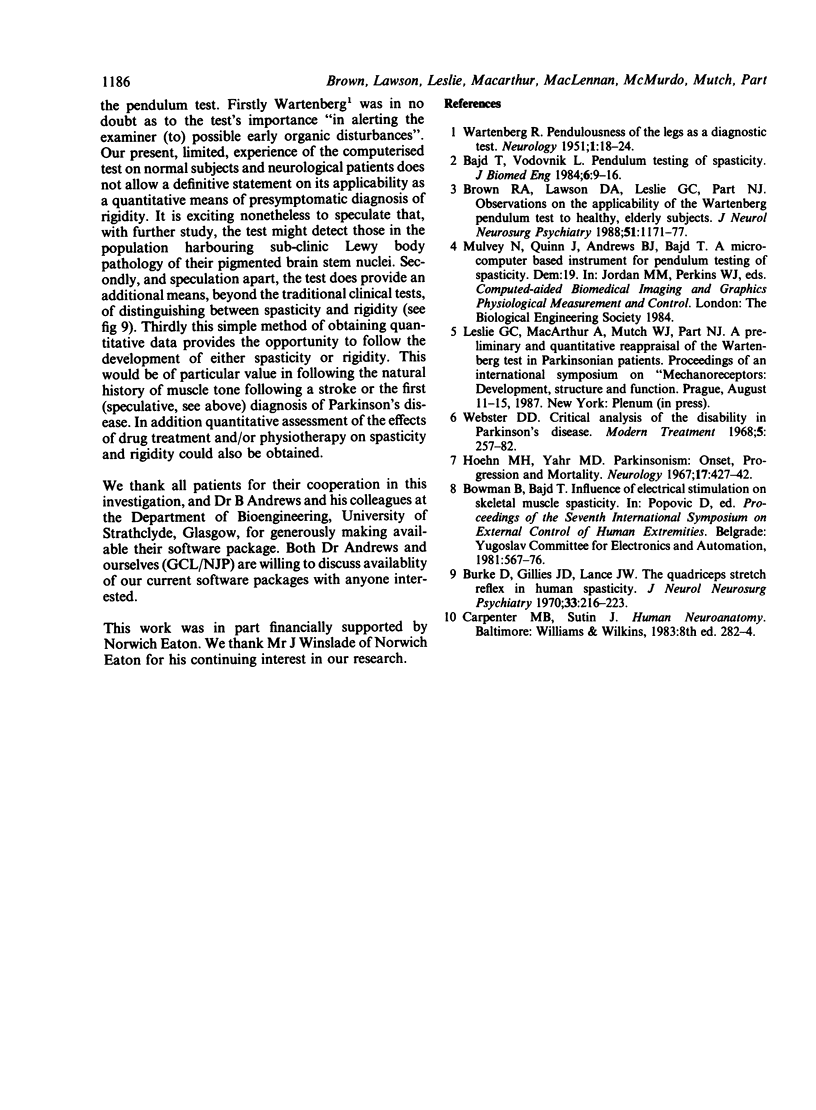
Selected References
These references are in PubMed. This may not be the complete list of references from this article.
- Bajd T., Vodovnik L. Pendulum testing of spasticity. J Biomed Eng. 1984 Jan;6(1):9–16. doi: 10.1016/0141-5425(84)90003-7. [DOI] [PubMed] [Google Scholar]
- Brown R. A., Lawson D. A., Leslie G. C., Part N. J. Observations on the applicability of the Wartenberg pendulum test to healthy, elderly subjects. J Neurol Neurosurg Psychiatry. 1988 Sep;51(9):1171–1177. doi: 10.1136/jnnp.51.9.1171. [DOI] [PMC free article] [PubMed] [Google Scholar]
- Burke D., Gillies J. D., Lance J. W. The quadriceps stretch reflex in human spasticity. J Neurol Neurosurg Psychiatry. 1970 Apr;33(2):216–223. doi: 10.1136/jnnp.33.2.216. [DOI] [PMC free article] [PubMed] [Google Scholar]
- Hoehn M. M., Yahr M. D. Parkinsonism: onset, progression and mortality. Neurology. 1967 May;17(5):427–442. doi: 10.1212/wnl.17.5.427. [DOI] [PubMed] [Google Scholar]
- WARTENBERG R. Pendulousness of the legs as a diagnostic test. Neurology. 1951 Jan-Feb;1(1):18–24. doi: 10.1212/wnl.1.1.18. [DOI] [PubMed] [Google Scholar]
- Webster D. D. Critical analysis of the disability in Parkinson's disease. Mod Treat. 1968 Mar;5(2):257–282. [PubMed] [Google Scholar]


